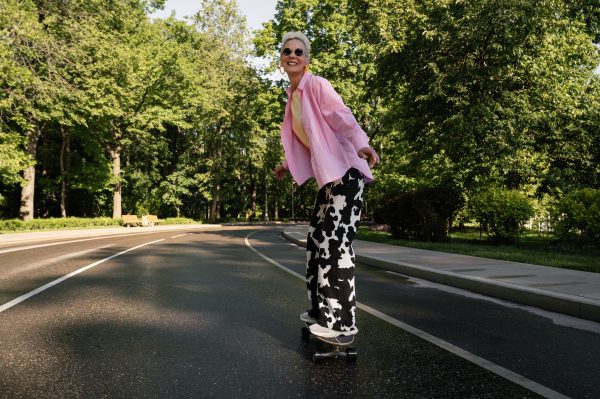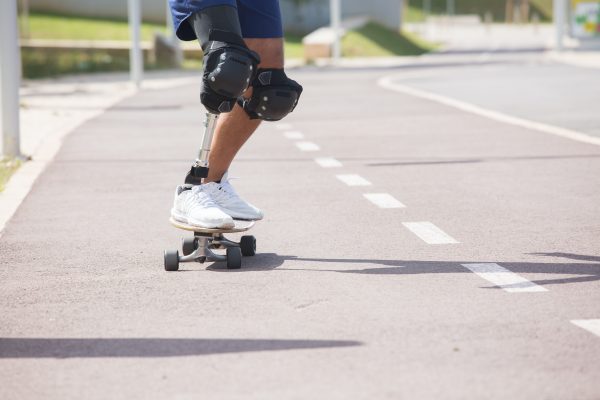Skateboarding isn’t just a fun sport or hobby. Unfortunately, skateboarding can compromise safety standards if not done with safety rules. To ensure skateboarding safety and an enjoyable experience on our skateboards, we must understand safety guidelines and rules of skateboarding.

Just like drivers of motor vehicles must know the safety laws of the road, skateboarders also have their own set of skateboard safety standards and guidelines to adhere to, to prevent skateboarding accidents.
To prevent injuries, facial injuries, and other severe injuries, one must find and wear protective gear, practice maintaining our skateboard, master basic skateboard skills, respect traffic laws, learn how to fall properly and be considerate of pedestrians and other skateboarders.
Skateboarding Rules & Safety
Promoting safe and responsible skating and ensuring the safety of our home readers and community are core values at FamilyHype. To achieve this, we’ve compiled a comprehensive list of essential safety tips, skateboarding etiquette, and skateboard reminders that must be observed. Safety tips, skateboarding etiquette, and reminders include prioritizing skateboard maintenance, attaining proficiency in basic skills before attempting tricks, especially in homemade skateboard ramps and supervised skateboard parks or skate parks, obeying traffic laws, showing consideration towards pedestrians and fellow skateboarders, and being aware of suitable riding locations. And according to most Academy of Pediatrics experts, for younger kids, adult supervision is also imperative. The American Academy of Pediatrics professionals urge users to follow these safety tips, skateboarding guidelines, and reminders as it will help aid safety riding and a more enjoyable skating experience for kids or children, parents, and everyone involved.
By following these vital safety tips, skateboarding guidelines, and etiquette, we can ensure a safer and more enjoyable experience on our boards.
Takeaways: Skateboarding Safety
- Safety: Safety is paramount when riding your skateboard on the skate road so you won’t land on fleshy broken bones.
- Neglecting safety can hit and lead to serious injuries and a level of accidents.
- Skateboarders should wear proper skateboarding safety gear, including safety helmets, arms wrist guards, knee pads, elbow pads, shoes, or new parts from the shop to aid safety skating at all times.
- Interacting with vehicles on the road requires extra caution and adherence to traffic safety rules or safety tips.
- Stop reckless behavior, it can compromise the safety of pedestrians and negatively impact the reputation of this skateboard sport.
- Proper safety measures ensure a positive and enjoyable riding experience.
- Setting a good example and following safety road regulations are essential for responsible riding for a person on a skateboard.
Skateboarding Safety Guidelines
Safety should never be compromised when skateboard-riding along the road because neglecting safety can lead to serious injuries, collisions with vehicles, and find potential harm to pedestrians and other road users. Skateboarders have limited protection in case of accidents, making proper safety gear essential. Moreover, disregarding safety rules may have legal implications and negatively impact the sport’s reputation. Learn by prioritizing skateboarding safety, skateboarders can enjoy the activity with peace of mind, set a positive example, and avoid years or lifelong consequences from potential accidents.
Skateboarding can be a fun and exhilarating activity, but safety should always be a top priority, especially when riding on the road. Here are some essential safety rules or safety tips on the road:
Protective Gear
Wearing essential protective equipment includes skateboard safety knee pads, elbow pads, wrist guards, and a safety helmet that fits properly when riding your skateboard. A multi sport helmet specifically designed for the skateboard sport is much better than a multi sport helmet, as it provides superior safety and protection from head injury, and is tailored to the unique risks of this multi sport. Wearing wrist guards and a properly fitting helmet, wrist guards, knee pads and elbow pads can help minimize the impact of falls and reduce the risk of serious injuries.

Use The Right Board
Among the safety guidelines is ensuring that your skateboard is appropriate for the type of terrain you’ll be riding on. Different skateboards are designed for various styles of skating, so choose one that suits your needs to ensure that it will be a fun and exciting activity.
Know The Local Laws And Board Regulations
Familiarize yourself with the laws and regulations concerning skateboarding in your area. Some places may have specific skateboarding safety tips or rules about where and when skateboarding is allowed, and it’s essential to stay adhere to them.
Choose Smooth Roads
Select roads and paths with smooth top surface and minimal traffic to ensure safety while doing the multi sport. Avoid busy streets, highways, and areas with potholes, loose gravel, cracks or other hazards that could lead to accidents and compromise safety. Also, do not use your skateboard in wet areas or irregular surfaces or those that are not slip resistant surface, or never to control and use skateboard in wet weather skateboarding areas.
Be Visible
For one of your skateboarding safety tips, wear bright or reflective clothing, especially when skating during low-light conditions or at night. Make sure you are easily noticeable to motorists and pedestrians.
Avoid Headphones And Distractions
To be safe while skateboarding, stay close, balance, focused and aware of your surroundings at all times, whether you’re on the streets or at the skate park. Avoid using headphones or any other distractions that can impede your ability to hear approaching vehicles, fellow skaters, or potential hazards on the roads and skate park ramps.
Follow Traffic Regulations
Skateboarding on the road means you’re sharing the space with cars and other vehicles. Obey traffic rules for everyone’s safety, safety including stopping at stop signs and traffic lights, yielding to pedestrians, and using hand signals to indicate your intentions. This is one of the most common skateboarding safety tips that is truly beneficial.

Watch For Pedestrians
Be mindful of pedestrians on sidewalks or crosswalks. Slow down and yield the right of way to them when necessary.
Maintain Control And Speed
One of the most common skateboarding safety tips is to always maintain control of your skateboard and ride properly at a safety speed. Avoid reckless behavior, such as weaving in and out of traffic or performing multi sport tricks in busy areas. Don’t always look on freestyle and speed since this recreational activity requires training.
Be Cautious At Intersections
Approach intersections with extra caution and low speed. You can use headphones while skateboarding, but look both ways and make sure it’s safe to proceed before crossing traffic.
Skate With A Buddy
Whenever possible, skate with a friend or a group. Having others around can help in case of an emergency, and it also increases visibility to motorists.
Safety Skating First: Safe Falling
Inevitably, you may fall while you ride a skateboard or skateboarding. Learn how to fall parts of body properly and safely and correctly by trying to roll with the fall rather than absorbing the impact with your arms or wrists, and aim to land on the fleshy parts of your body to minimize the risk of injury when skating in skateboard parks. Support the wrist and all parts of your body from injury.
Skateboarding Rules: Safety
We believe in the importance of respecting pedestrians and other skaters when it comes to proper etiquette. It’s essential to follow these skateboarding safety tips key points:
- Skater etiquette requires us to yield to others on the skateboard, especially when they’re performing tricks. That way you can avoid breaking parts of your body. Don’t forget to wear a helmet
- Pedestrian awareness means we must slow down or stop completely when people are crossing our path.
The safety of skateboarders is also highly dependent on skating in designated areas, such as skate parks, streets, or sidewalks. Skateboarders, as part of the larger skateboarding community, should practice be aware of the rules governing the use of public spaces and should practice safe skateboarding at all times to ensure a fun and exciting activity for everyone.
When it comes to skateboards and skateboarding etiquette, it’s important to remember that the primary purpose of skateboarding is to have fun and stay safe. Moreover, skateboarders should always be mindful of the other people in their vicinity and respect their space. By being aware of the rules and regulations and practicing proper etiquette, skateboarders can ensure that everyone can enjoy skateboarding safely and responsibly.
Skateboarding Rules Conclusion
Safety is of utmost importance when skateboarding on the road. Neglecting skateboarding safety measures can result in serious injuries, collisions with vehicles, harm to pedestrians, and legal consequences. Skateboarders should always wear proper safety gear and follow road rules to minimize risks. Always wear a helmet. By prioritizing safety, skateboarders can enjoy the sport responsibly, set a positive example, and protect their well-being and that of others. So, whether you’re a seasoned rider or a beginner, remember to make safety a top priority and have fun while riding responsibly.
